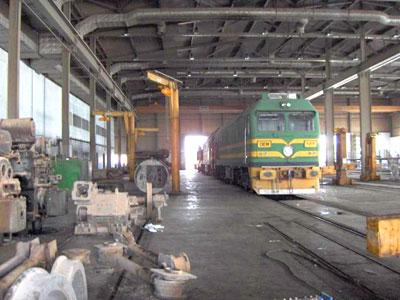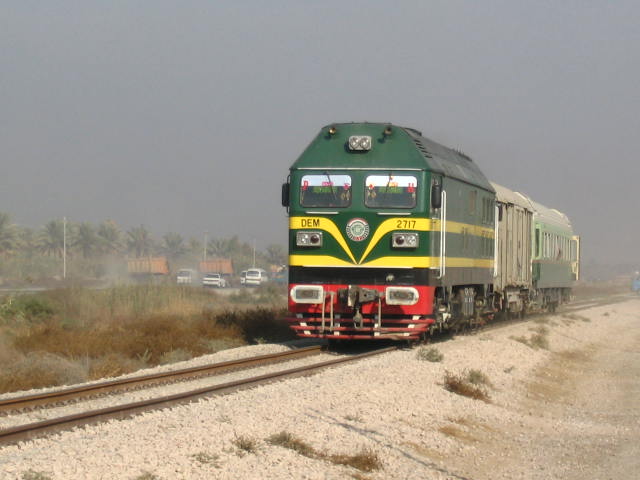A press release from DVIDs, the US military’s Digital Video & Imagery Distribution System. Obviously this may not by a totally unbiased source of good news, but it’s still interesting.
For some reason they refer to Iraqi National Railways, rather than Iraqi Republic Railways.
Taji Train Moves Cars to Baghdad
By Staff Sgt. Bryant Maude
1st Sustainment Brigade
24 March 2008CAMP TAJI, Iraq – The day started off with a stuck switch that needed to be repaired before Mustapha, the conductor for the Iraqi National Railways, could move his Chinese built diesel-electric train down the tracks to collect the 54 flat cars destined for Bagdad’s central rail yard, March 20.
“We’re removing 54 old, defunct train cars out of the Taji rail yard in an effort to clear up space for future rail moves,” stated Maj. Ira Baldwin, a Laurinburg, N.C., native and mobility chief for the 1st Sustainment Brigade.
The Taji rail spur project started weeks ago with the arrival of the first train since 2004 and continued with a crew of Iraqi National Railway workers cleaning tracks and repairing switches. Eventually this spur will be used by both coalition forces and the Iraqi army as a place to move heavy cargo in and out of the Central Receiving and Shipping Point (CRSP) and the Taji National Depot respectively.
“This proof of purpose does several things,” states Baldwin. “It serves as a test bed for the U.S. Army to conduct rail operations in Iraq, and builds confidence in the Iraqi National Railway. Eventually, having a viable rail system, the Iraqi army will have a means by which they can transport equipment, provide good jobs for Iraqi workers, and aid in the overall growth of the Iraqi economy.”
This optimistic approach was not just evident in the Soldiers, but the conductor and his crew as well.
“Very pleased with the way the railroad has returned,” said Mustapha.A twenty-seven year veteran of the rail business, Mustapha got his start as a result of watching friends who encouraged him to become a driver. Now he operates a number of aging trains that were purchased years ago from places like Spain, Turkey, China, and Germany.
“I hope to get newer equipment and that the tracks will be improved and the depreciation to the equipment will slow down,” said Mustapha. “God willing it will be in the service of the Iraqi forces and everyone knows how efficient they are at running things.”





